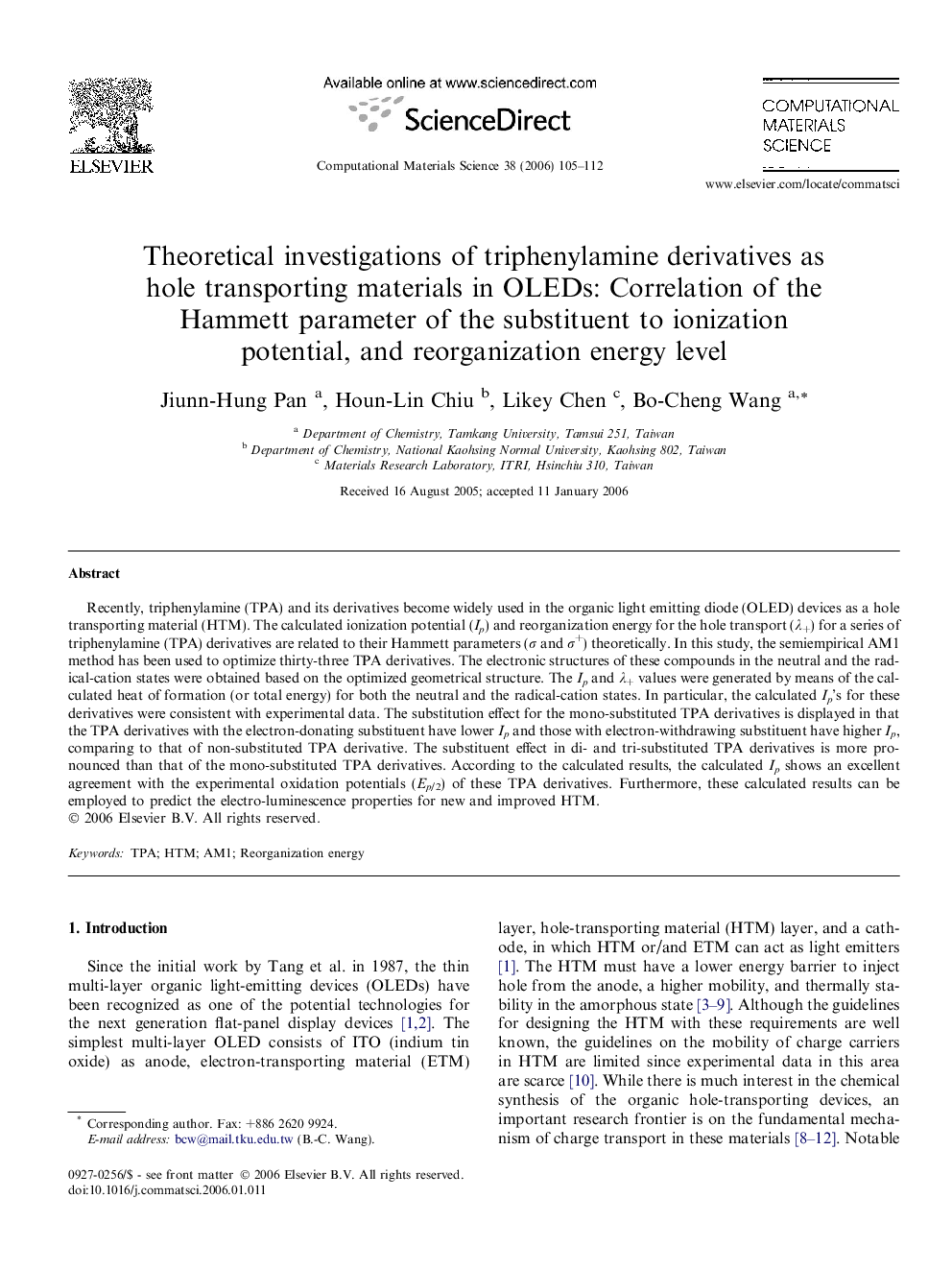| Article ID | Journal | Published Year | Pages | File Type |
|---|---|---|---|---|
| 1564467 | Computational Materials Science | 2006 | 8 Pages |
Recently, triphenylamine (TPA) and its derivatives become widely used in the organic light emitting diode (OLED) devices as a hole transporting material (HTM). The calculated ionization potential (Ip) and reorganization energy for the hole transport (λ+) for a series of triphenylamine (TPA) derivatives are related to their Hammett parameters (σ and σ+) theoretically. In this study, the semiempirical AM1 method has been used to optimize thirty-three TPA derivatives. The electronic structures of these compounds in the neutral and the radical-cation states were obtained based on the optimized geometrical structure. The Ip and λ+ values were generated by means of the calculated heat of formation (or total energy) for both the neutral and the radical-cation states. In particular, the calculated Ip’s for these derivatives were consistent with experimental data. The substitution effect for the mono-substituted TPA derivatives is displayed in that the TPA derivatives with the electron-donating substituent have lower Ip and those with electron-withdrawing substituent have higher Ip, comparing to that of non-substituted TPA derivative. The substituent effect in di- and tri-substituted TPA derivatives is more pronounced than that of the mono-substituted TPA derivatives. According to the calculated results, the calculated Ip shows an excellent agreement with the experimental oxidation potentials (Ep/2) of these TPA derivatives. Furthermore, these calculated results can be employed to predict the electro-luminescence properties for new and improved HTM.
